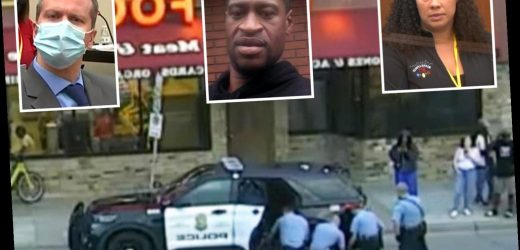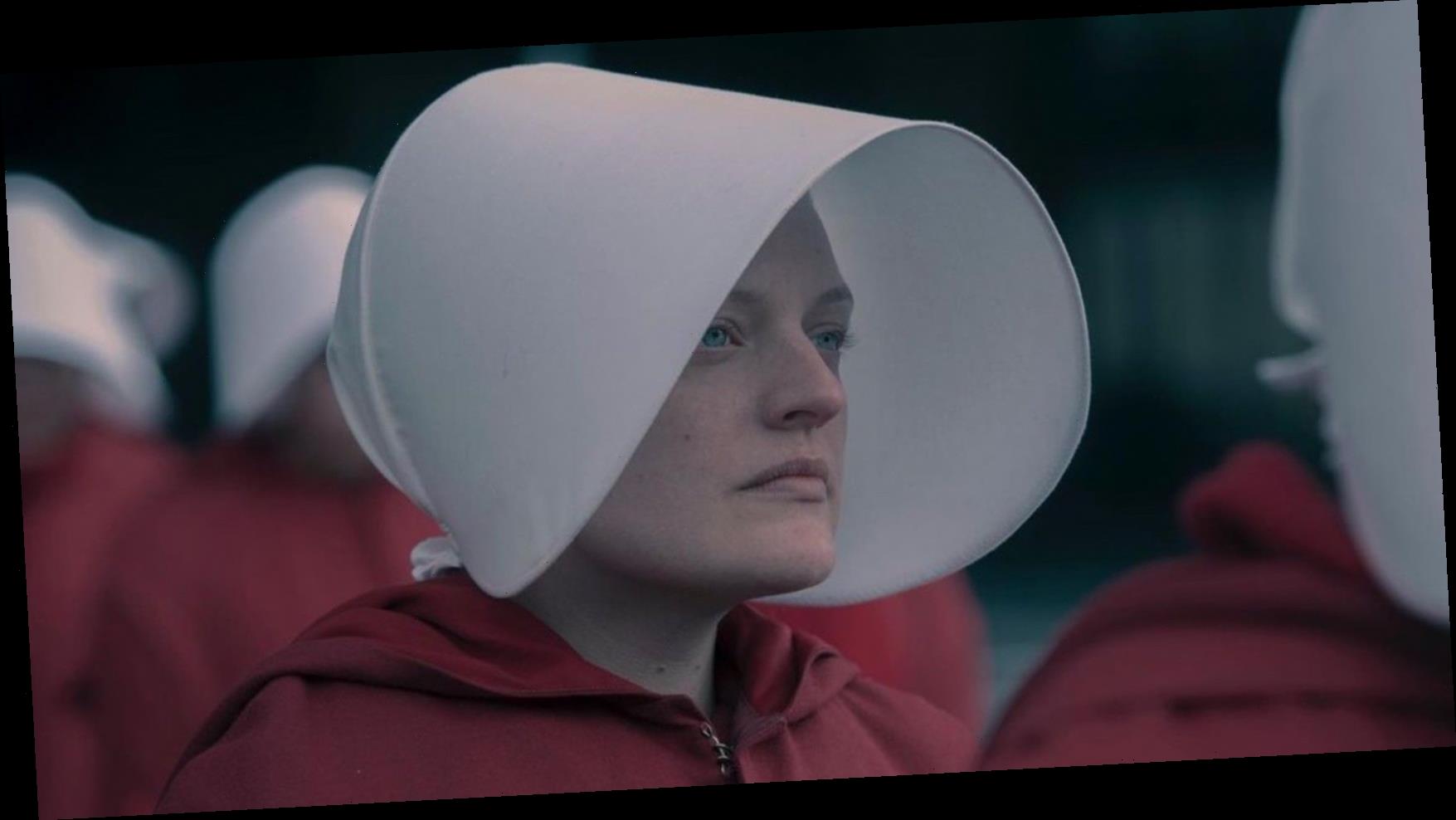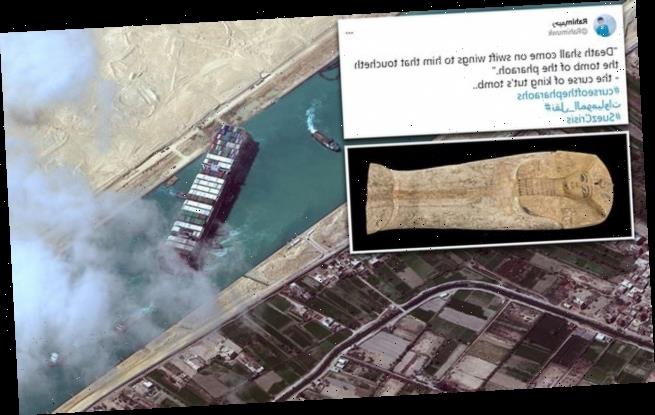NEW footage presented in Derek Chauvin’s murder trial shows cops pinning down George Floyd as the 911 dispatcher revealed she feared being viewed as a “snitch” for reporting their actions.
City of Minneapolis 911 dispatcher Jena Scurry was the first witness on Monday and described how her “gut instinct” made her concerned while watching a live feed of the arrest.
You can read a live blog of the trial here.
Scurry said that from her TV feed, she saw the officers pinning down Floyd for so long that she believed the screen had frozen.
On the first day of the trial:
- Prosecution showed video footage taken by bystanders of Floyd's death
- Defense claimed the video alone can not be used as proof as "evidence far greater than nine minutes"
- Chauvin's legal team claimed heart disease and drug use were responsible for his death
- Both opening statements referenced Floyd's opioid addiction
- Second witness Alisha Oyler gave her testimony on watching the incident from the gas store where she worked across the street
- Third witness Donald Williams who can be heard condemning the cops in social media footage was called by the state
- Chauvin faces charges of unintentional second-degree murder, third-degree murder, and manslaughter
In her testimony, Scurry claimed that from the dispatcher’s office, she was aware that the ambulance had arrived but had not yet seen paramedics attend to Floyd.
Her discomfort resulted in her calling Minneapolis Sgt. David Pleoger to raise concerns when she didn't receive a call for backup.
“You can call me a snitch if you want to,” she told the sergeant, who oversaw the officers involved, in the call played for the jury.
Scurry told the court she said that as it was “out of the scope” of her job to call the sergeant in this manner.
“I don’t know if there’s a use of force or not,” she added in the call the Pleogar.
Scurry was able to see a video of the scene on a TV screen in her office but noted that she did not watch the whole incident as she was answering other calls to dispatch.
Prosecution played the footage with Scurry identifying the parts she had watched.
The footage showed the officers taking Floyd from the store and attempting to place him in the patrol car.
After a tussle, the footage then showed the four officers pinning Floyd to the ground, as bystanders slowly began to gather and record the incident.
The footage continued to show as the crowd became angrier as Floyd’s body became limp but the cops continued to hold him down.
“My instincts were telling me something was wrong,” Scurry, who has worked as a dispatcher for seven years, told the court.
“It was a gut instinct of the incident: Something is not going right. Whether it be they needed more assistance. Just something wasn’t right.”
Prosecution attorney Jerry Blackwell has described Scurry’s testimony as crucial because she had attempted to intervene in Floyd’s arrest because of what she saw.
“There was a fixed police camera that was trained on this particular scene. She could see through the camera what was going on," Blackwell said.
"You will learn that what she saw was so unusual and, for her, so disturbing that she did something that she had never done in her career.”
Yet defense attorney Eric Nelson argued that Scurry was not certain that Sgt. Pleoger had not already been called to the scene when she called him herself.
He also argued that she was watching other screens and dealing with other calls and so was not fully focused on watching the incident.
Scurry acknowledged that she was “not familiar with the use of force requirements” for the police force when questioned by the defense.
Yet she said that she had not changed her mind about the reasons why she called Sgt. Pleoger.
SECOND WITNESS
The trial’s second witness was 23-year-old Alisha Oyler who was working in a gas station across the street from the store where Floyd was arrested.
Oyler appeared nervous and repeatedly said she couldn’t remember many of the details from the incident ten months prior.
She had filmed several videos from inside the gas station as she worked, claiming that she first realised something was happening when she saw cops “messing” with a man across the street.
She told the court that police are "always messing with people and it’s wrong and it’s not right."
Prosecutors played the video Oyler recorded as the ambulance arrived at the scene alongside the surveillance footage viewed by Scurry.
Chauvin's lawyers repeatedly asked Oyler about the crowd gathered around Floyd and the police officers.
OPENING STATEMENTS
Earlier footage presented on the first day of Chauvin's murder trial showedFloyd bleeding and sceaming as bystanders yelled "they'll kill him" while the ex-cop was kneeling on his neck.
The high-profile trial began on Monday after Floyd's family knelt outside of the courthouse for 8 minutes and 46 seconds, the length of time Chauvin was filmed kneeling on the 46-year-old's neck before he died.
The trial began with Judge Peter Cahill reminding the jury that they should not seek out further information about the trial and warning that it would contain graphic footage.
The prosecution led the opening statements with attorney Jerry Blackwell playing a video from one of the bystanders to the jury, showing what Floyd's family has branded as "torture."
In response, defense attorney Eric Nelson argued that the “angered” bystanders intervening in Floyd’s arrest had diverted officers’ attention from his medical needs.
He contested that that “threat” the bystanders posed was the reason Floyd did not receive faster medical attention.
In his opening statement, Blackwell said that Chauvin "betrayed the badge" when using the "excessive force" seen in the video while arresting Floyd on May 25 last year.
The first footage showed Chauvin continuing to kneel on Floyd despite both the father-of-one's own pleas for help and those of the angered bystanders.
At the beginning of the video, Floyd is heard calling out for Chauvin to allow him to breath.
The 46-year-old screams for his mother and says he believes he will die as he warns Chauvin that he is claustrophic.
Witnesses call again and again for the cop to move, screaming "get off his neck," but Chauvin refuses to even as the paramedics arrive to treat him.
One bystander is heard asking to be allowed to check Floyd's pulse but Chauvin instead threatens her by pointing to the mace on his belt.
The prosecution said that witness, a paramedic named Genevieve Hanson, will be called in the coming four weeks as she insists that she could have potentially saved Floyd's life if allowed to intervene.
Blackwell contested in his opening statement that Chauvin stayed on Floyd's back until he was "unconscious, breathless and pulseless."
He accused Chauvin of "grinding and crushing" Floyd until "the life was squeezed out of him."
Blackwell noted that the defense team will bring up Floyd's opioid addiction but said that it was not responsible for his death.
"He did not died form a drug overdose, he did not die of an opioid overdose," the prosecution said.
They also presented an image of the $20 counterfeit bill over which Floyd was arrested and claimed that it was not clear that Floyd knew the money as fake.
Blackwell argued that the matter was something for a court and did not quantify the force used agaisnt Floyd on the day he died.
As Blackwell was speaking, Chauvin was seen taking notes.
DEFENSE HIGHLIGHTS OPIOID ADDICTION
Defense attorney Eric Nelson criticized the prosecution for focusing too heavily on the footage of Floyd’s death.
He claimed that there was more to the case than the nine minutes shown in the clips on social media as he hit out at the Black Lives Matter movement being brought into the courtroom.
“There is no political and social cause in this courtroom,” he argued, claiming that "reason and common sense" was needed.
The defense insisted Floyd died from a heart disease and an overdose of meth and fentanyl, rather any force used by Chauvin.
Nelson claimed that there were no signs that Floyd was asphyxiated or that his airflow was restricted in any way, despite the findings of the medical examiner.
He noted that Hennepin County Medical Examiner Dr. Andrew Baker revealed "many other issues" in the report, including coronary disease, an enlarged heart and swelling of the lungs.
"The state was not satisfied with Dr. Baker's work, and so they have contracted with numerous physicians to contradict Dr. Baker's findings," Nelson said.
"This will ultimately be another significant battle in this trial: What was Mr. Floyd's actual cause of death?" he continued.
"The evidence will show that Mr. Floyd died of cardiac arrhythmia that occurred as a result of hypertension, coronary disease, the ingestion of methamphetamine and fentanyl, and the adrenaline flowing through his body, all of which acted to further compromise an already compromised heart."
Nelson also claimed that the bystanders arguing with the officers responding to the call on May 25 was responsible for the cops failing to give Floyd medical attention.
He told the jury that the bystanders forced the officers to "divert their attention from the care of Mr. Floyd to the threat that was growing in front of them."
Nelson continued to highlight the concerns raised about Floyd in the calls to 911, including claims that he was drunk.
FAMILY KNEELS
Rev. Al Sharpton and Attorney Ben Crump joined the Floyd family for a press briefing before entering the courtroom on Monday morning.
Crump hit out at claims that Floyd caused his own death and said that Chauvin was on trial, not the victim.
"This is a landmark moment in American history," Crump said.
"This is the moment to show the rest of the world that you are the standard bearer when it comes to liberty and justice to all. The whole world is watching."
"Chauvin is in the courtroom but America is on trial," added Rev. Al Sharpton.
Several members of Floyd's family spoke, calling for "justice" and stating that someone must be held accountable for the father-of-one's death.
"We came to get justice, and nothing less," Floyd's nephew Brandon Williams said.
His brother Terence Floyd said that they watched the video of Floyd's death as it was the last time they could hear their brother's voice.
In an interview with Today earlier on Monday, Floyd's other brother Philonise called the trail a "slam dunk."
"We know that this case, to us, is a slam dunk because we know the video is the proof, that's all you need," he said.
"The guy was kneeling on my brother's neck for 8 minutes and 46 seconds, a guy who was sworn in to protect. He killed my brother in broad daylight."
Almost all of the 15 jurors selected said they have seen at least part of the video in which the white ex-Minneapolis cop pressed his knee against Floyd's neck for almost nine minutes.
VIDEO CRITICAL TO TRIAL
Legal experts had predicted that the video of Floyd's death would be shown in opening statements.
“If you’re a prosecutor you want to start off strong," Jeffrey Cramer, a former federal prosecutor and managing director of Berkeley Research Group in Chicago, told Associated Press.
"You want to frame the argument – and nothing frames the argument in this case as much as that video."
The video of Floyd's death sparked months of outrage and protests across the US.
It showed Chauvin kneeling on Floyd's neck while three other police officers also held him down.
Chauvin continued to kneel on the black man even as Floyd repeatedly said, "I can't breathe."
Floyd went limp while he was lying on his stomach in handcuffs and was later pronounced dead.
The key questions at Chauvin's trial will be whether he caused Floyd’s death and whether his actions were reasonable.
His defense is expected to arguethat Floyd was at least partially responsible for his own death as he swallowed drugs before his arrest.
The county medical examiner's autopsy noted fentanyl and methamphetamine in Floyd's system.
However, it listed his cause of death as “cardiopulmonary arrest, complicating law enforcement subdual, restraint, and neck compression.”
“They could bring up everything my brother did in his past,” Floyd’s brother, Terrence Floyd, said at a vigil in a Minneapolis church on Sunday night.
“But that don’t have anything to do with those 8 minutes and 46 seconds.”
CITY PREPARES FOR PROTESTS
In Minneapolis, city leaders are determined to avoid the damaging riots that erupted in the wake of Floyd's death, as bystander video spread rapidly on social media.
The courthouse has been fortified with concrete barrriers, fencing andbarned and razor wire.
The National Guard has also been mobilized for the four-week trial.
Chauvin is facing an unintentional second-degree murder charge and a third-degree murder charge.
Prosecutors have to prove Chauvin’s conduct was a “substantial causal factor” in Floyd’s death for him to be convicted on the second-degree murder charge.
They must prove that Chauvin's actions were reckless and without regard for human life if he is to be convicted of second-degree murder.
Chauvin also faces a manslaughter charge for which prosecutors must prove that he cuased Floyd's death through negligence that created an unreasonable risk.
The trial continues on Tuesday.
Source: Read Full Article













































